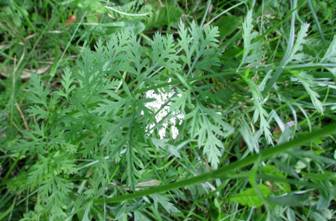
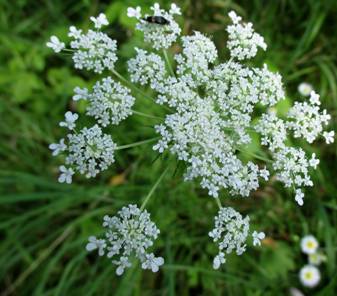

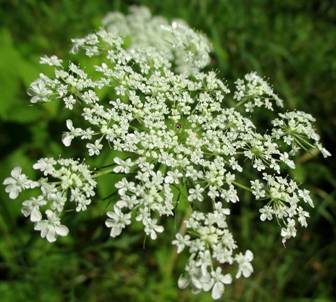
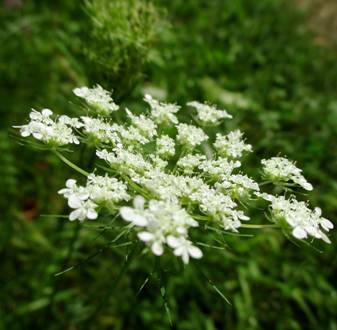
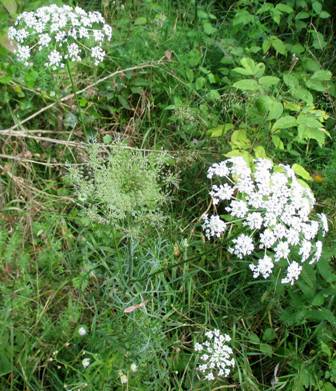
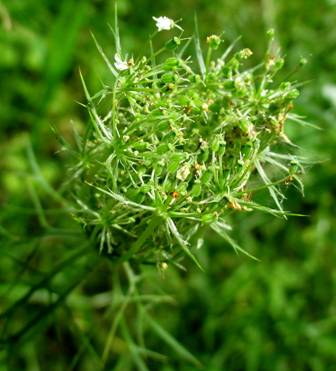

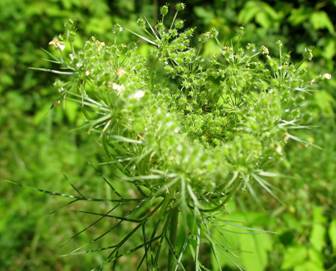
Wild Carrot (Daucus carota), fam. Apiaceae.
Not very often found in our forest, mostly in humid places. It blooms in July-August – at first, the central, largest umbels, then smaller and smaller branches, while the fruits in central inflorescence, looking like a bird's nest, start to ripen.
It is necessary to learn how to distinguish wild carrot, so as not to confuse it with other plants of Apiaceae (Celery) family, among which some are toxic. The feature of wild carrot is the presence of purple-black flowers in the center of the umbel composed of white flowers, but not nesessary in every inflorescence. Another feature is spiny fruits. Unfortunately, the roots of those plants having flowers and fruits are already dry and useless. So, if the roots are what you need, you should look for small first-year plants, which have not bloomed yet, among the groups of wild carrots. Domesticated forms of wild carrots are known as Daucus sativus; this is one of the healthiest vegetables. Some wild plants do not form any winter roots at all, while even those that do, have small, non-sweet, and weakly colored roots. The leaves are too tough for any use even in domesticated carrots, and even cooking cannot soften them significantly.
Wild Carrot provides diuretic, sedative, antibacterial, spasmolytic action. The decoction or water infusion of the plant, or fruits ground into powder are good appetising, anthelmithic, carminative remedy, and also can eliminate kidney and urinary tract stones. The essential oil is responsible for specific smell of the plant.